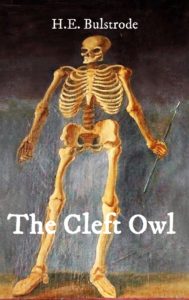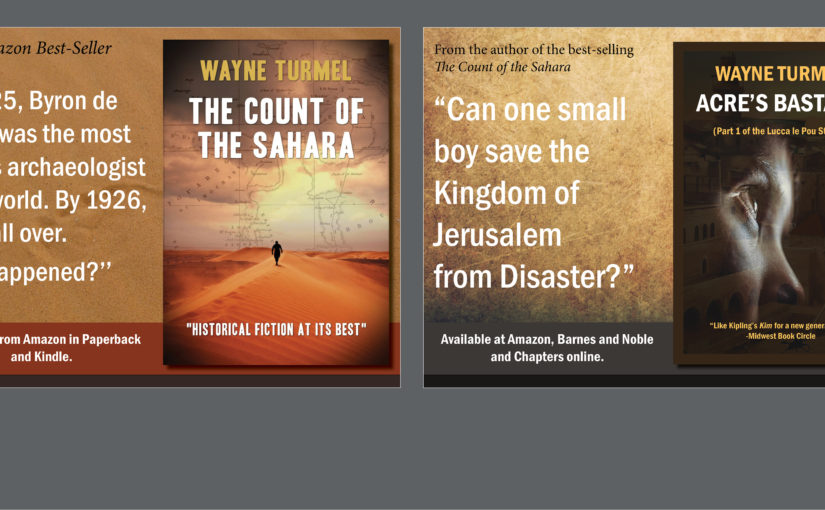As a writer, one of my neurotic drivers is the need to be appreciated for my work, so I confess that the idea of working under a pseudonym has never occurred to me. After all, how can I be slavishly admired if nobody knows who I am?
That said, a number of people I’ve interviewed here write under pen names. Some because of the controversial nature of their work (usually that means hot or transgressive sex), some because they are worried that their professional reputations might suffer if they published as themselves (people with university gigs to keep). Whatever the reason, all of this brings me (in a winding and completely self-absorbed way) to today’s interview with HE Bulstrode. At least that’s what he (and I’m only taking his word that he’s a he) calls himself when writing his tales of superstition, witchcraft and violence in the English West Country. Tales like his novella, The Cleft Owl.
So if hordes of slavish fans actually knowing who you are isn’t your deal, what’s the HE Bulstrode story?

My background is in academia, but I now find myself with time to indulge something that has long been denied me: writing creatively without the need to cite interminable references larded with copious footnotes. I have been fascinated by history since an early age, as well as the oddities of folklore and beliefs of times gone by, although the more I see and hear of the world these days, the more disabused I am of the illusion that certain irrational beliefs dwell in the past alone. (and all the choir said, AMEN!) I have written five other novellas and novelettes with an uncanny edge – all set in the English West Country, which is where I grew up – but ‘The Cleft Owl’ is my first piece that could properly be termed historical fiction, if the 1920s is discounted (in England, that’s just yesterday). I am currently working on a full-length novel – ‘Pendrummel: Gwen Gwinnel’s Return’ – which opens in 1670s Cornwall, and will be available in paperback as well as Kindle format.
For the record, the Historical Novel Society says HF is anything more than 30 years ago…. so my high school years qualify as history. Let that sink in. At any rate, what’s your novella about?
Superstition, credulity and deception in a seventeenth-century Devon village.  It draws upon a peculiar and little known sequence of events that unfolded in the rural community of Widecombe-in-the-Moor, subsequent to the self-murder of one of their number. The figure of Robert Tooley, the local cunning man, looms large in the tale, for it is he that a family call upon to deal with the fallout arising from their neighbour’s suicide. This, however, proves to generate more problems than it solves.
It draws upon a peculiar and little known sequence of events that unfolded in the rural community of Widecombe-in-the-Moor, subsequent to the self-murder of one of their number. The figure of Robert Tooley, the local cunning man, looms large in the tale, for it is he that a family call upon to deal with the fallout arising from their neighbour’s suicide. This, however, proves to generate more problems than it solves.
Cunning man is a real job title? How do you get that gig? At any rate, what is it about that time period that fascinates you so much?
I stumbled upon the person of Robert Tooley and his associated case whilst re-reading Keith Thomas’s ‘Religion and the Decline of Magic’ as background for my forthcoming novel ‘Pendrummel: Gwen Gwinnel’s Return.’ The sheer oddity of the events outlined – of the singular nature of the charms and rites employed by Tooley – was striking, as was the ease with which a number of the villagers willingly acquiesced with his instructions, at least for a time. This, moreover, all took place in an area of Devon – Dartmoor – which is steeped in dark folklore and legends, with the village having been associated with a visitation of Old Nick himself during the ‘Great Storm’ of October 1638. On this particular Sunday, the parishioners were gathered in the church, which proved to afford them but ill shelter, for a bolt of lightning sent a pinnacle toppling through its roof, and was shortly followed by a sphere of dancing light – ball lightning – which bounced and scorched its path about the interior, leaving four dead and more than sixty injured.
Other than the raw facts of the case itself, and a handful of names, few details remain relating to the historical episode that occurred some years after this traumatic event. These thus provided a kernel of truth around which a tale of the bizarre and the uncanny could be woven, with there being a distinct whiff of brimstone about the character of the village’s self-declared doctor. Coupled with the attraction of real historical personages named the Worshipful Sir William Bastard and the Reverend Tickle, how could I resist putting pen to paper (and finger to keyboard, come to that)? The events sketched by Thomas proved ideal for working up into a novella.
Magic and witchcraft are not uncommon themes in works of fiction, particularly in those set in the 17th century, but they normally focus upon female witches, so the opportunity to write about the misdeeds of a cunning man, rather than a female equivalent, appealed to me. As the novella is set in the 1680s, when a supernatural interpretation of the world was gradually ceding its place to a naturalistic one – at least amongst the educated classes – it also afforded the opportunity to inject a little ambiguity into the attitudes of some of the characters with respect to such matters: can Tooley truly work magic, or is he nothing more than an unscrupulous trickster?
For me, there is no more fascinating period of English history than the 17th century, owing to it having been a time of great social, political and intellectual ferment, and it is something of a puzzle to me, as to why it should be less popular with writers than the Tudor era, or the nineteenth and twentieth centuries. Perhaps it has something to do with an aversion to massive periwigs. Whatever the case, I shall be revisiting this century later this year.
And we shall look forward to it. Without giving away spoilers, what’s your favorite scene or event in the book?
That’s a tough one, especially when considering that this is a novella, and I don’t wish to give too much away, but the closing scene would be the logical one to cite. If, on the other hand, you should be looking for a moment that will make you flinch, you’ll appreciate a particular segment of ‘A prison of bended withies,’ in which Tooley makes preparations for the rite that he is shortly to perform. I’ll say no more than that. I hope that you enjoy it.
Where can people find you, your book, or your “bended withies?”
The Cleft Owl: https://www.amazon.com/dp/B06WD2G219/ Also on Amazon UK https://www.amazon.co.uk/dp/B06WD2G219/
Amazon Author Page: https://www.amazon.com/H.E.-Bulstrode/e/B01HT9OJ8I/
Blog: http://www.hebulstrode.co.uk/
Facebook: https://www.facebook.com/H.E.Bulstrode/
Goodreads: https://www.goodreads.com/author/show/15451543.H_E_Bulstrode

Most enjoyable. I am intrigued and very much looking forward to reading more from this darkly witty writer.
Me too, your highness. Thanks for stopping by.